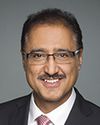Thank you. Just before I ask my next question, I just want to say that I sincerely appreciate that. Right now, there are federal programs designed for rural communities that benefit communities 10 times the size of some I represent, which can't access the same ones. I do appreciate your comments.
Finally, if I have time, Madam Chair, the timing of the agreements with the provinces around phase two could present a challenge. Some, such as the warden of Antigonish County, for example, raised this with me. If we roll out programs that don't kick in until the summer, it can be more expensive to fund projects, because the contractors are all busy.
I understand that you're negotiating these things quite soon, and if we can get a deal in the winter, say, when things are slower, this might enable small communities to build one extra project. What's the rough timeline of the infrastructure agreements so that we might be able to take advantage of this cycle?





